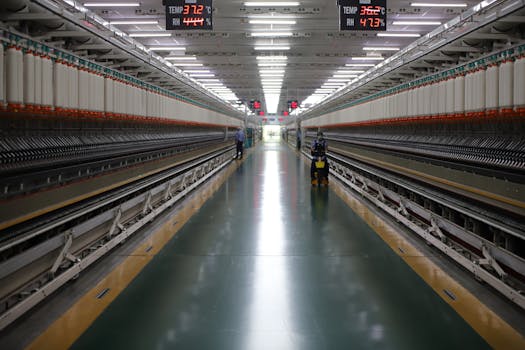
Fiber Futures: Innovations and Trends in Africa’s Textile Industry
Fiber Futures: Innovations and Trends in Africa’s Textile Industry. The African textile industry has undergone significant transformations in recent years, driven by advancements in fiber technology, shifting consumer preferences, and the need for sustainable practices. As the continent continues to grow and develop, its textile industry is poised to play a vital role in shaping the future of fashion and manufacturing.
Introduction to Africa’s Textile Industry
Africa’s textile industry has a long and rich history, with evidence of textile production dating back to ancient civilizations such as Egypt and Ethiopia. Today, the industry is a significant contributor to the continent’s economy, employing millions of people and generating billions of dollars in revenue each year. From cotton production in West Africa to textile manufacturing in South Africa, the industry is diverse and complex, with a wide range of players and stakeholders involved.
Key Trends and Innovations
Several key trends and innovations are driving the growth and development of Africa’s textile industry. One of the most significant is the increasing use of sustainable fibers, such as organic cotton and recycled polyester. As consumers become more environmentally conscious, textile manufacturers are responding by incorporating eco-friendly materials into their products. Another trend is the adoption of digital printing technologies, which enable faster and more efficient production of high-quality textiles. Additionally, the rise of e-commerce and social media is changing the way textile manufacturers market and sell their products, with many companies now using online platforms to reach customers and promote their brands.
Challenges and Opportunities
Despite the many opportunities and innovations in Africa’s textile industry, there are also significant challenges to be addressed. One of the major obstacles is the lack of infrastructure and resources, particularly in rural areas where many textile manufacturers are based. Additionally, the industry is highly competitive, with many international companies competing for market share. Furthermore, the textile industry is often criticized for its environmental and social impact, with concerns around water pollution, labor exploitation, and waste management. However, these challenges also present opportunities for innovation and growth, as companies seek to develop more sustainable and responsible practices.
Conclusion
In conclusion, Fiber Futures: Innovations and Trends in Africa’s Textile Industry is a rapidly evolving and dynamic sector, driven by technological advancements, changing consumer demands, and the need for sustainable practices. As the industry continues to grow and develop, it is likely to play an increasingly important role in shaping the future of fashion and manufacturing in Africa. With its rich history, diverse cultures, and abundant resources, the continent is well-positioned to become a major player in the global textile industry, and its fiber futures look bright.



